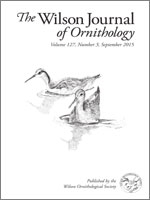Little is known about oviposition in colonial seabirds. Egg-laying behaviors of Glaucous-winged Gulls (Larus glaucescens) were recorded using custom-modified digital pocket spy cameras. Oviposition involved standing or crouching over the nest, a series of contractions while assuming a characteristic posture, a short labor vocalization at the peak of contraction by some gulls, and a drying time while standing over the nest after oviposition. Active camouflage by some females was noted while sitting on the nest prior to and after oviposition and after an egg robbery occured. Eggs were laid throughout the day and night. Not surprisingly, given that our study occurred during the first part of the egg-laying season, Poisson regression analysis showed that egg laying increased with the day of the year. It decreased with solar elevation. Egg losses by cannibalism and predation increased with rising tides and with the day of year when more eggs were present. The implications for egg censuses are discussed.
How to translate text using browser tools
1 September 2015
Oviposition behavior in Glaucous-winged Gulls (Larus glaucescens)
Gordon J. Atkins,
Amanda G. Sandler,
Mindy McLarty,
Shandelle M. Henson,
James L. Hayward
ACCESS THE FULL ARTICLE
camouflage
cannibalism
egg laying
Larus glaucescens
predation
synchrony
vocalization





